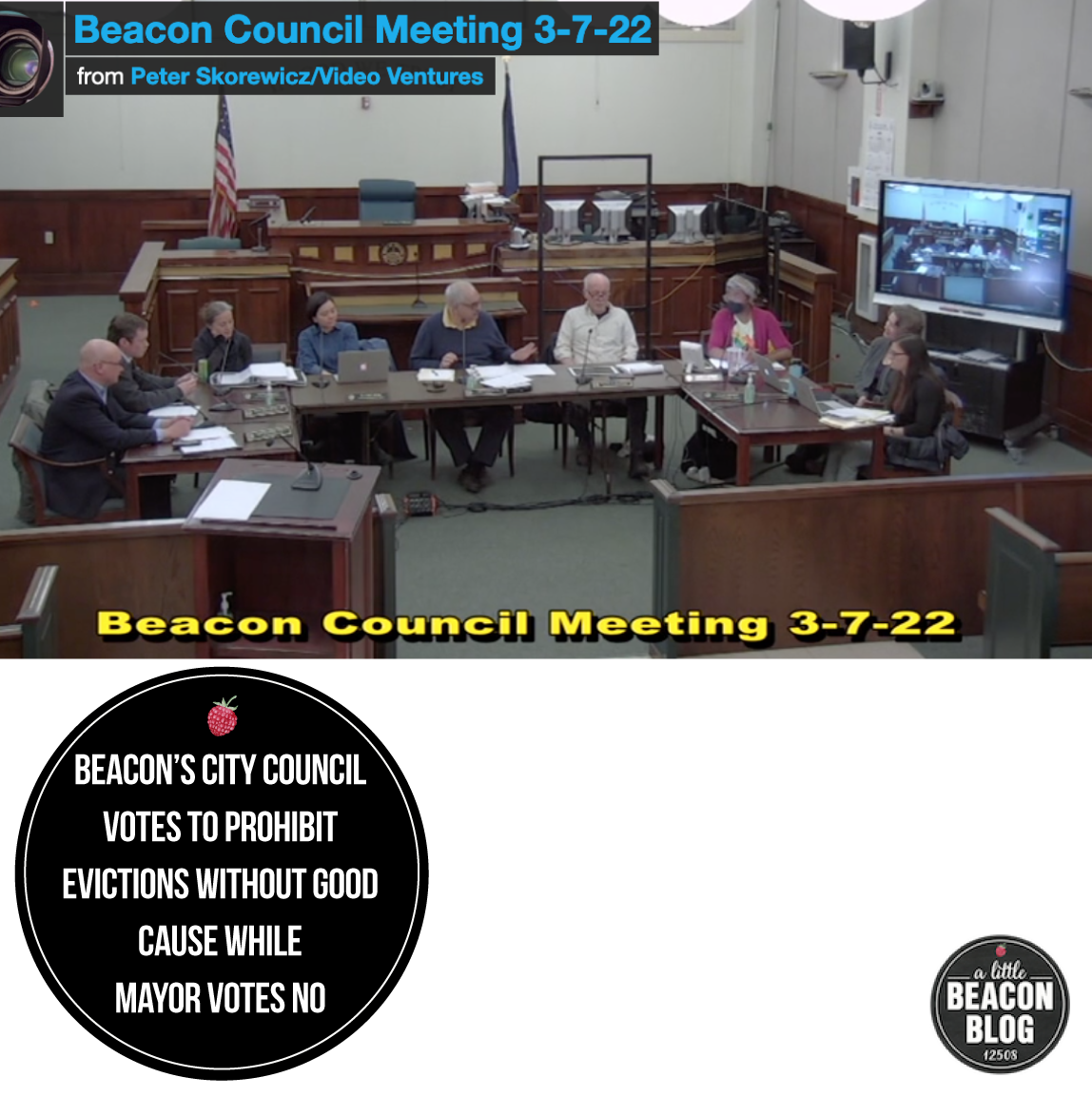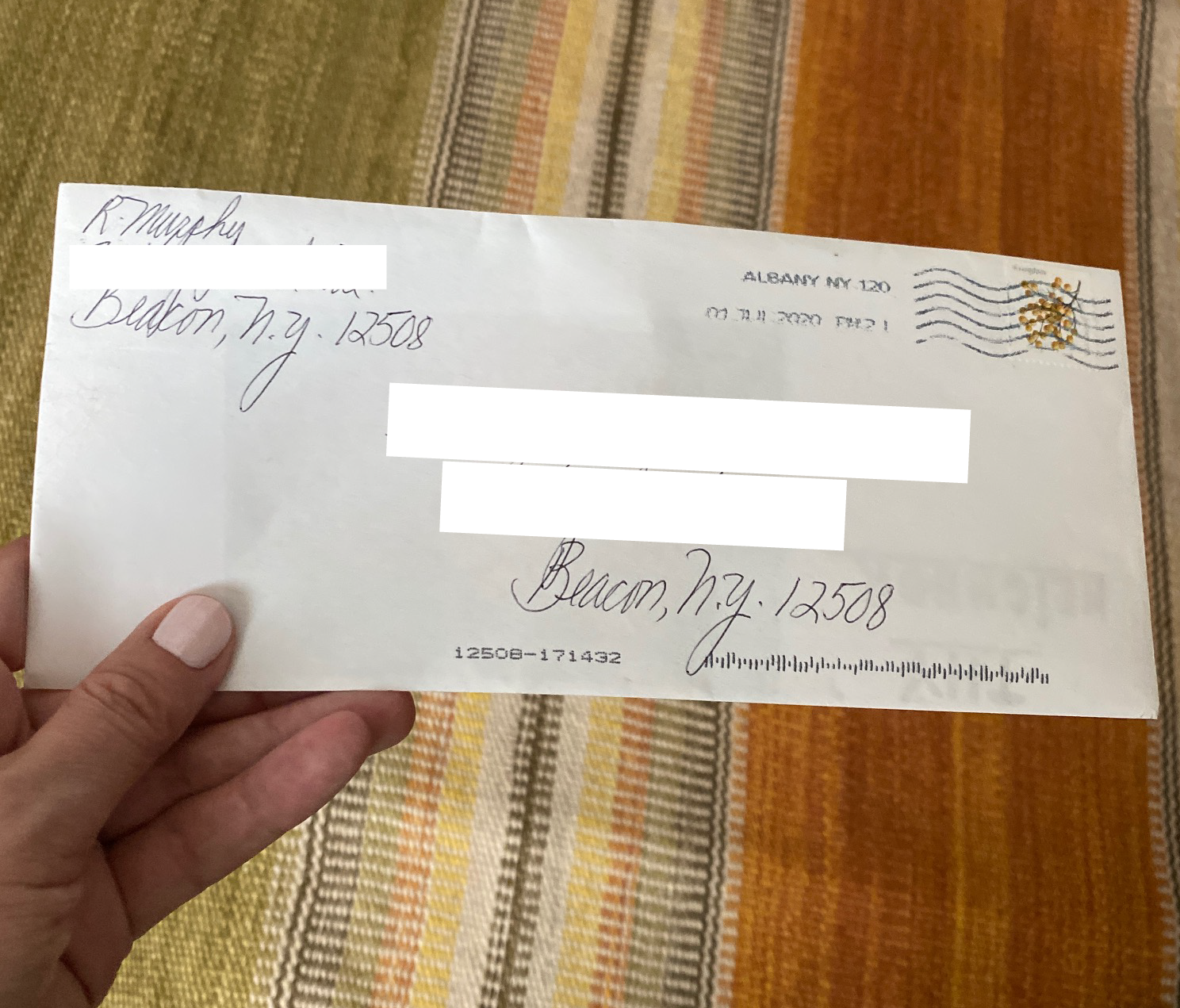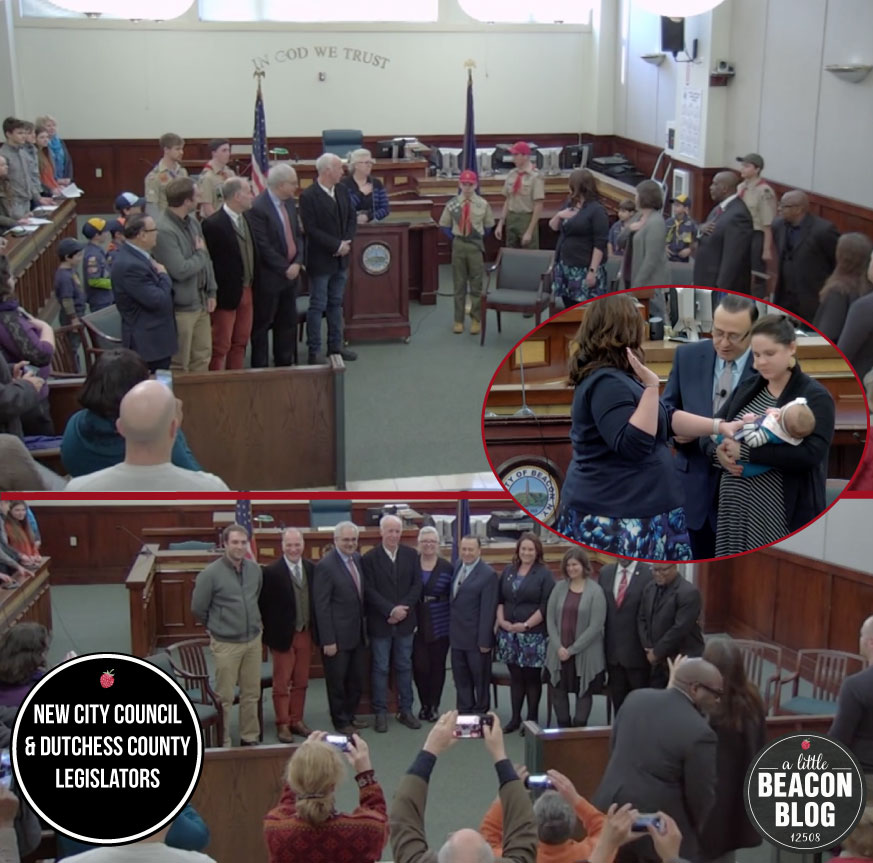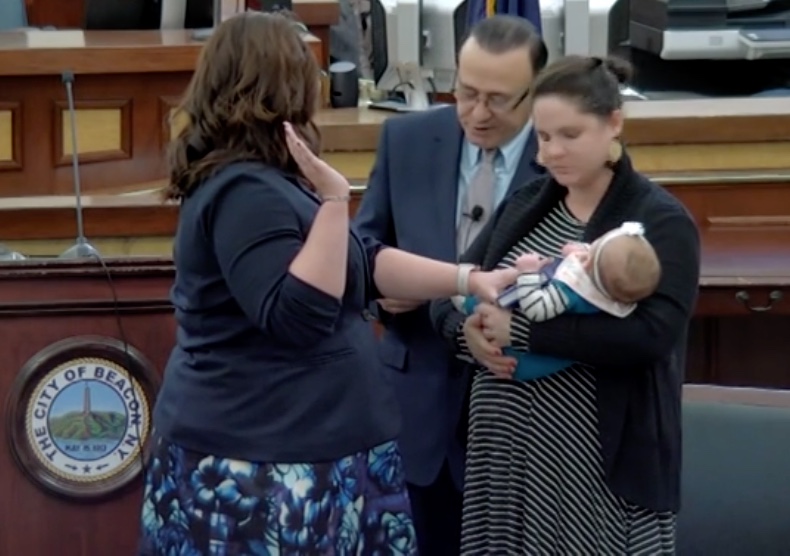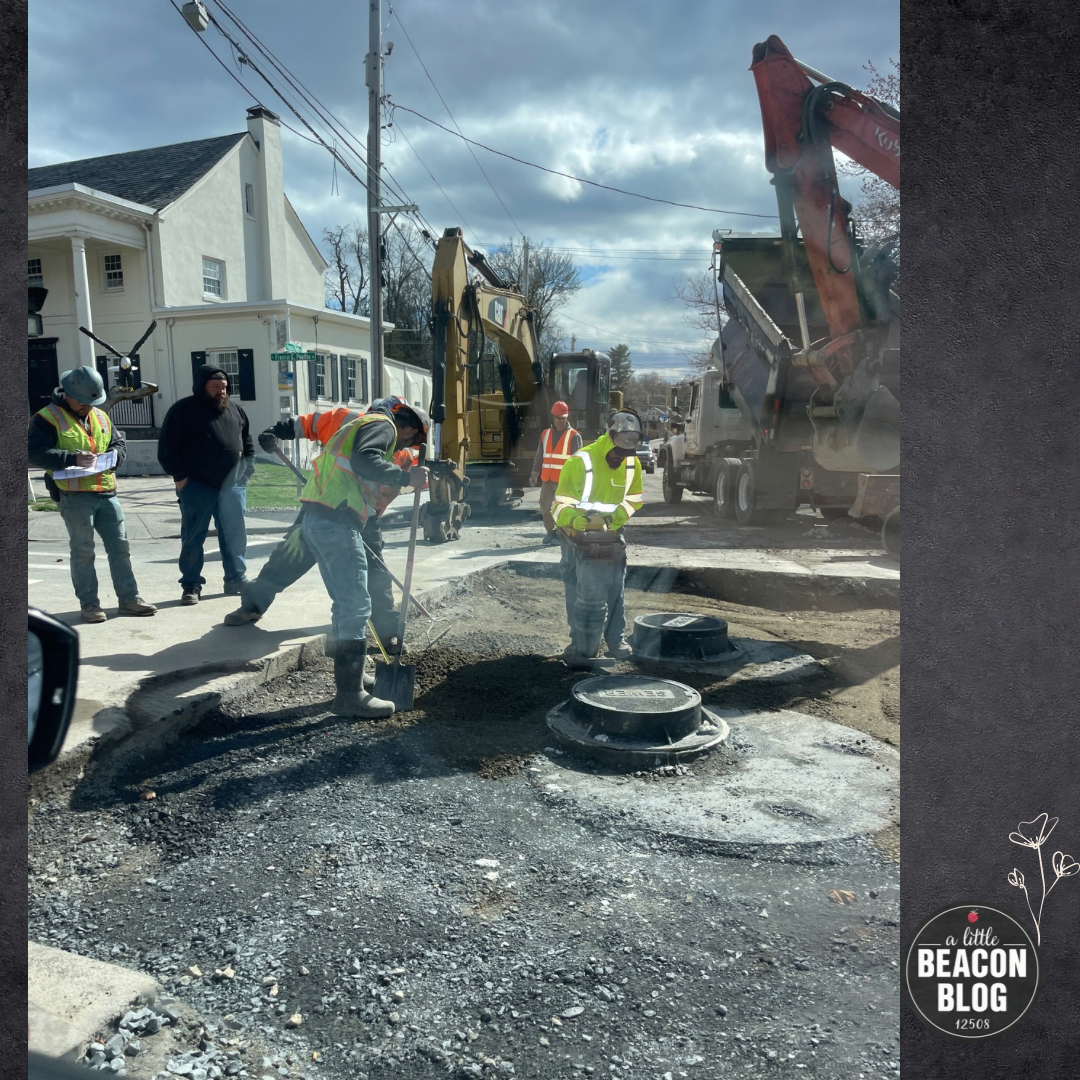Beacon's City Council Announces Passage Of Law Prohibiting Evictions Without Good Cause - Mayor Votes Against - Council's Responses
/On Monday, March 7, 2022, Beacon’s entire City Council voted to pass a law prohibiting residential evictions without good cause, known to some as the “Good Cause Eviction Law.” Mayor Lee Kyriacou, who is a landlord, voted against the law. The press release prepared by Beacon’s City Council has been provided in full below.
Beacon’s Eviction Without Good Cause Law accounts for many situations, including requiring landlords to provide good cause to raise the rent above 5% if contested by their existing tenant requesting proof of necessity if the tenant/landlord discussions break down and the landlord pursues going to court to let a judge decide on the legality of the rent increase.
Where Is This Law Coming From?
Beacon is joining in the national movement within the housing crisis for all people to not let long-term rentals be a cut-throat rental market business model anymore. Other municipalities in this area have crafted and signed similar legislation, including Newburgh, Kingston, Poughkeepsie and Albany. Each of those communities, including Beacon, experienced the decimation of many of their historic buildings during the federally funded program Urban Renewal, which ended up mattering when rent regulation laws were enacted. Albany currently has one lawsuit against it, brought on by three landlords and their companies, asking for the law to be rescinded, as reported in the Times Union. There is proposed legislation in New York State Legislature that would enact a similar measure statewide.
It is in part because of that destruction that these communities cannot enact forms of rent stabilization found in New York City today. A new law in New York State, the Emergency Tenant Protection Act of 2019, allows for a declaration of a housing crisis in a locality, but is based on having a number of historic buildings still in tact. However, as has been especially demonstrated in the past several years, laws are created, and laws are walked back upon when levels of harm are represented by groups of people advocating for change.
Residential Real Estate As A Business Model
During this process of legislative debate, advocates for Beacon’s law stressed that housing is a human right and needs more protection. Landlords who showed up to public meetings to speak answered that money they invested in a property is their retirement plan and should not be impeded upon. However, price hikes in any business model usually proves bad for business, and results in a client-business breakdown. Some Beacon landlords showed up to speak in favor of the law.
Even in the short-term rental market, or a client-services market - if a client is used to paying one price over a long period of time - to suddenly hike that price usually ruins the business/client relationship. In the housing market, the long-term landlord may replace the tenant quickly in an unregulated market, but in the equally unregulated service or even the short-term rental industry which has online reviews tied to it, pricing is regulated by online reviews (social pressure), proper business relationships, and providing great service. Because secure housing is such a desperate need, some residential landlords don’t often face social pressure to keep rent increases stable, or provide stellar service in some cases.
Said the lead author of the law, Councilmember Dan Aymar-Blair, to A Little Beacon Blog about the passage of this law: “Tenant-landlord issues are most often resolved out of court and I hope that continues. The law has clear definitions of what constitutes good cause eviction and that framework can be used for discussions before anybody has to go to court. I hope landlords and management companies that depend on abusing tenants for profit margins will see their business model won't work in Beacon.
“I hope that Beacon will next come together to address the lack of affordable housing for all income ranges. Good cause eviction means that tenants can organize and participate without fear of retaliatory evictions and jacked rents.”
Was This Vote Expected This Night?
The week prior, The City Council was not anticipating voting on the law on March 7th. Week after week, the law had been pushed forward by the Council to even get it to the stage of Public Hearing, which is where it was the Monday evening of this week. For months, the City Council heard resistance from its retained legal counsel, Keane and Beane, who also represents developers building rental units in the City of Beacon, to advise the City not to create a law, stating on public record that it would be difficult to defend if a lawsuit was brought against the City. The Council then discussed the possibility of hiring a different law firm to represent a lawsuit in that case, should that happen.
Beacon’s City Administrator Chris White stressed throughout several discussions his concern for “fiduciary” spending of taxpayer dollars on legal costs defending this law. It is not clear on his definition of fiduciary, since he has currently authorized at least $110,000 of taxpayer dollars in the pursuit of terminating employment of a longtime city employee of the Highway Department, in addition to over $50,000 in paid-leave salary for that employee to not work during a labor shortage.
This law was in its second round of Public Hearing, where anyone in Beacon could come speak their mind about it. With this law being discussed on social media and out in real life for several months, it was hard for the community to ignore the effort. Landlords came to speak in favor or against, as did tenants. Advocates for the law even held a holiday caroling/protest in December 2021 at Pohill Park, which marched to City Council to confront the then City Councilmembers during their last days on council before the new members started.
Self-Fulfilling Prophesy Of Rent Hikes Before The Law Passed
After at least one tenant came forward to public City Council Meetings to speak in favor of the law, word circulated that some landlords had begun raising rents in anticipation of the free-for-all rent hike situation getting regulated.
That Beacon tenant reported at the next Public Hearing, that after she spoke in public at a City Council Meeting, she had subsequently asked her landlord to fix something necessary in her apartment, whereby she received by text from her landlord saying that he would fix it. In the same text, he declared he was also raising her month-to-month rent by $600/month. This hike, after an agreed upon hike of $100/month over the summer, resulted in a $700/month hike within one year, she told A Little Beacon Blog. This renter is White, works in the non-profit sector, and volunteers to teach classes in a corrections facility in the evenings.
Usually, if the City Council expects to vote on a legally binding resolution the night of the closing of a Public Hearing, the Resolution is noted in the official Agenda for the City Council, and a vote is taken that evening. This can be fore anything simple like having a Public Hearing for allowing firefighters to live further away from Beacon, hearing from the community, and then voting affirmatively right after if the public doesn’t bring overwhelming objection.
But this vote wasn’t on the evening’s agenda after the Council closed the Public Hearing, yet they discussed putting it on the agenda during the opening of the meeting. A Little Beacon Blog asked Councilmember Dan if the Council expected to vote that evening. He answered: “Yes. When we started to hear that landlords were retaliating against renters, we had no choice. Seeing that the outstanding amendments would have weakened the law and allowed this retaliation to continue for another month, we pressed forward.”
When asked if he was surprised to see it not initially on the agenda, Councilmember Dan answered: “No, it wasn’t an issue.” You can listen to how they all discussed putting the vote on the agenda at the beginning of the City Council Meeting here.
When Did This “Eviction Without Good Cause” Movement Start?
In the Before Times, during the pre-pandemic days, and during the former administration under Mayor Randy Casale, rents were already on the rise in Beacon. Former Councilmember Terry Nelson suggested pursuing the Emergency Tenants Protection Act of 2019. During that administration, where Lee Kyriacou was then a Councilmember, the common response by then Mayor Casale and some councilmembers to Councilmember Terry’s urging was that rents would self regulate under market conditions.
When the new administration came in, with former Councilmember Lee Kyriacou winning the election to become Mayor, the new Mayor Lee Kyriacou gave a platform for the Emergency Tenant Protection Act of 2019 to be considered, after Councilmember Terry continued to bring it up. Mayor Lee would state that he was doubtful that Beacon qualified for the tenant protection. Yet he dedicated space at a public Workshop Meeting for expert opinion to explain why Beacon did not qualify.
The Emergency Tenant Protection Act of 2019 requires a locality to know its rental vacancy rate, and of those, that the buildings are ones built between February 1, 1947 and December 31, 1973. Many of Beacon’s buildings that were of that age had been bulldozed during the federally ordered Urban Renewal period. You can get an introduction to Urban Renewal from the blog Newburgh Restoration, who describes it as a “tragedy” when mentioning how 1,300 buildings were demolished there, 9 streets “plowed under,” and “The city’s African American community was uprooted, with thousands of businesses and residents displaced.” A similar situation happened in Beacon. The Emergency Tenant Protection Act of 2019 requires that these buildings still exist to qualify.
During the time of Beacon’s Emergency Tenant Protection Act of 2019 discussion, Mayor Lee also stated that Beacon does not have a housing survey to know its vacancy rate. He did not imply that Beacon was in a hurry to conduct such a study. However, he did support spending at minimum of $50,000 on a Parks and Recreation study to be told what people want from a central Community Center. Two such centers used to exist in Beacon, and Beacon’s current tiny Parks and Rec building at 23 West Center Street is bursting at the studs with services and volunteerism.
The City Council’s pursuit of more tenant protections continued, with Councilmember Dan Aymar-Blair pushing to have a Good Cause Eviction Law considered. Councilmember Dan took the lead on drafting the law with other Councilmembers and the City’s retained law firm, Keane and Beane.
A Little Beacon Blog reached out to former Councilmember Terry Nelson to get his take on the passage of this law, and if he thought his early efforts helped from years ago. He responded: “It’s not really for me to say if my efforts helped, but I would like to think they did. It’s always a good thing when renters get the protections they deserve. But any law only works when there is effective enforcement. Attention must be paid to the level of enforcement of the new law.”
What Some City Council Members Said Upon Voting
Before casting his vote of Yes, Councilmember George Mansfield, who consistently voiced concern about leaving renal rates in the hands of a judge on a case-by-case basis, said this to explain his vote in favor of the passage of the law:
“This is a complicated issue, and I appreciate everyone who has come out during the course of this discussion.
“I'd like to first say that Keane and Beane, our lawyers, have represented this community and looked out for them for as long as I've been on council - or maybe I've been here longer than Keane and Beane has, but. So I truly respect your advice and consider that greatly in my decision.
“I also think, that I can see through our discussions, that we have an opportunity to respond to Albany - that there might be an opportunity - I don't feel like we are risking an expensive lawsuit going forward - that we can respond.
“I would have preferred to wait for the Albany decision to come down. But I think we have time to respond between maybe passing this and actually going to quote and the cost of litigation associated with that.
“One of my goals when we pass a law such as this is to help as many people and to hurt as few people in the decision. And in the end, no one is fully happy, and no one got fully what they wanted out of these discussions.
“I think that there is an urgency right now, certainly listening to some - part of the urgency is created not only by the greed, but by the fear of this law being passed. I think that is what is happening to some people. Landlords are raising rents objectionably and unconscionably right now. They've been known to do that in the past as well.
“My decision tonight will be based on helping as many people and hurting as few people going forward. Thank you all for being part of this conversation.
Mayor Kyriacou had this to say before casting his lone vote of No:
“The issue that I have respect to authority is that I have been sitting on Council for a long time. The nature of how City's get their authority from the State is not supported in this area. I'm sorry, but that is what it is. You all may have a different view, and I'm very respectful of that view.
“The second of my concern is, if we are picking away to help renters, and I think we do need to help renters, pitting one part of the community against the other is the wrong way to do this, and this does exactly that. Which I find that just sad.
“I know we want to help renters. Again, the County has announced a rental support program for people in low-income. That I think is the correct approach. It's something that we all as a community pay taxes to support, and I'm supportive of that. Pitting one part of the community against the other is the wrong way to go. I'm just saddened as I listen to us just dividing ourselves.
“The ones that I am focused on helping is low-income renters. There are plenty of renters that have come to Beacon who are fully capable of paying the full rents that are out there now. That's why those rents are out there. If we afford them the same rights, they will push low income renters out, and that's the group I really, really wish to help. I don't think this law is structured correctly do to so. Those are my concerns.”
In answering the Mayor, Councilperson Justice McCray gave their answer before voting in favor of the passage of the law:
“To that point, this law is designed to keep people in their homes, so I don't see how this would push low-income renters out,” Justice said.
“Just to talk about eviction:
“Evicted individuals are 11% to 15% more likely to experience a loss of employment and medical insurance as compared to individuals who have not been evicted (Harvard University)
“Children victimized by eviction are typically forced to transfer schools; a traumatic destruction of stable educational and peer relationships that has been shown to have a lasting negative impact on childhood development. (National Education Policy Center)
“All adult populations, once evicted, experience higher-all cause mortality, increased instances of emergency room visits, higher rates of addiction and relapse, depression, and suicide. (National Library of Medicine)
“Cost-burdened households spend more than 30% of their income on rent, and severely cost-burdened households spend more than 50% (Disrupted)
“I came onto Council as a community organizer working in social and racial justice. Passing Good Cause is crucial for bringing racial justice to housing. More than two-thirds of Black families in New York State rent. Among renters, Black households are the most vulnerable to eviction, the most likely to experience discrimination from landlords, and the ones most likely to be displaced when neighborhoods change.
“High rents and gentrification have had a devastating impact on Black communities in New York State. In my social justice work over the past couple of years, I’ve built connections with Black members of our community who lived here for years, and because they weren’t protected by this law, they’re gone. I don’t get to walk around the corner and share meals with them anymore. If you’ve been here for not even 10 years, you’ve seen the active displacement of Black people in Beacon. Good Cause is an important step in promoting community stability and combating displacement.
“According to a study published last week by the Pratt Center for Community Development Urban Democracy Lab, Legal Aid Society, Housing Justice for All, and the Community Service Society: “Black Households In New York Are 3x As Likely To Face Eviction As White Households”
“Councilmembers and community alike have stated that housing is a human right. It’s not just a philosophy. Universal Declaration of Human Rights Article 25: Everyone has the right to a standard of living adequate for the health and well-being of himself and of his family, including food, clothing, and housing…
“I support Good Cause Eviction.”
The Press Release From The City Council After The Vote
Below is the press release from the City Council, that has not yet been published to the City’s website yet. In earlier discussions as the law was debated, City Administrator Chris White asked the Keane and Beane attorney if the law, if voted on, could be delayed to be published to the City Code and delay enforcement, to which the attorney answered that it could. It has not been stated as to the date that this law will be published to the City Code.
BEACON, NY MARCH 8, 2022 - In last night’s City Council meeting, the Beacon City Council passed their hard-fought “good cause eviction” law tonight with the support of all six City Council members. By providing Beacon’s housing court with a framework for what constitutes an eviction with good cause, the City Council hopes to end the leniency of eviction proceedings against tenants, allow greater access to due process, and mitigate the displacement of residents. The law builds upon the fact that housing is a human right and that apartments and houses are not just commodities, they are homes.
“To clear up misconceptions, this law does not change that evictions require the courts. What it does is sets relevant standards for the proceedings that protect tenants,” said Wren Longno, Ward 3 Councilmember.
Specifically, grounds for eviction with good cause include:
Non-payment of rent
Substantial lease violations
Property damage
Committing a nuisance
Refusal of access
Illegal activity
Bad-faith refusal to sign a written lease
If the landlord wants to move themselves or a family member into the rented unit.
Additionally, rent increases above 5% will require a justification before a judge in cases where the tenant objects to the increase. The law intends to end the practice of arbitrary evictions and steep rental increases which are de facto evictions.
“Beacon is a popular place to live, and with good reason, but increased rents of 20% or more have become common which is simply impossible for most people.” said Councilmember At-Large Paloma Wake “While this law does not directly address affordable housing per se, we know that stable housing has compounding benefits for the entire city. When basic needs are met, individuals can be more active and thriving members of our community.”
Since Councilmember Dan Aymar-Blair for Ward 4 first introduced the law in August 2021, neighboring communities of Newburgh, Poughkeepsie, and Kingston passed their own similar versions of the law.
While no legal action has been taken against these municipalities, over several workshops, the City Council discussed the potential of a lawsuit brought by landlords. The City Council concluded that the risks posed to the city by a lawsuit were low, particularly the threat of legal expenses.
“Passing Good Cause is essential for bringing racial justice to housing,” said Ward 2 Councilmember Justice McCray. “More than two-thirds of Black families in New York State rent; and among renters, Black households are the most vulnerable to eviction, the most likely to experience discrimination from landlords, and the ones most likely to be displaced when neighborhoods change. If you’ve been here for not even 10 years, you’ve seen the active displacement of black people in Beacon. Black households in New York are three times as likely to face eviction as white households. Good Cause is an important step in promoting community stability [preserving diversity] and combatting displacement.”
Similar laws are still being considered around New York State, including New Paltz and Ithaca. A statewide bill is also actively under consideration.
“Tenants can now organize and speak up about their living conditions without fear of retaliatory evictions and jacked rents,” said Aymar-Blair. “Now that the folks who depend on affordable housing can fearlessly join the conversation, the City Council is ready to turn its attention to creating new affordable housing for low-income residents and working families.”
Molly Rhodes, Ward 1 Councilmember said, “We hope this can be a launching point where both tenants and landlords feel inspired to come together to help the city craft future housing policies and vision.”
From:
City of Beacon Councilmembers Dan Aymar-Blair, Wren Longno, Justice McCray, Molly Rhodes, and Paloma Wake
“Pitting One Part Of The Community Against The Other” - Governing Laws Already Do This
One of Mayor Lee’s stated concerns is for avoiding this legislation is to avoid “pitting one part of the community against the other,” implying tenants vs landlords. This type of “pitting” has already existed in the form of legislation in New York State, especially so in New York City and parts of Albany, Erie, Nassau, Rensselaer, Schenectady, and Westchester counties where rent control is still in effect, according to the Residential Tenants Rights Guide. These members of the community are already pitted against each other when the landlord pursues going to court to evict a tenant - if it reaches that point, and the tenant doesn’t self-evict.
A Little Beacon Blog has spoken to people who work in different areas. Families who have the same job year after year - fixed income if you will - who cannot afford a large rent increase - and then need to move out of Beacon to Wappingers or Newburgh to find comparable rent. Nurses. Home care workers. Self-employed creators. Service-industry folks like bar tenders and restaurant managers can barely afford to live in Beacon, yet they work here. Some commuting from counties over. “Artist lofts” are very limiting for who qualifies to live in those units, and can be discriminatory.
It is unclear who these low-income people are that Mayor Kyriacou says he advocates for, since the people he seems to say can pay these rising rents may be from certain private sectors, or people who rent apartments as second get-away homes, or are never home because their jobs who can afford this rent send these new Beacon citizens to other locations to do their jobs. Or, are the blessed collection of employees who can work remotely from home.
